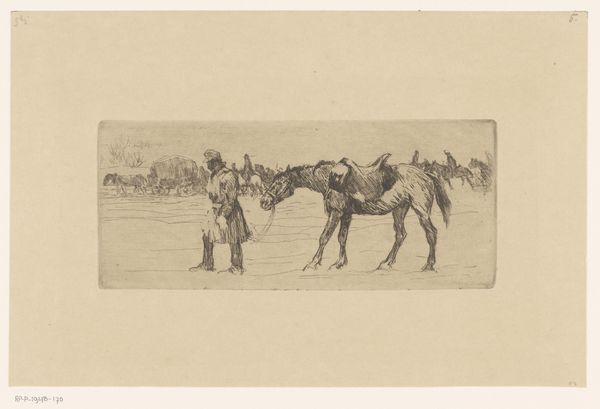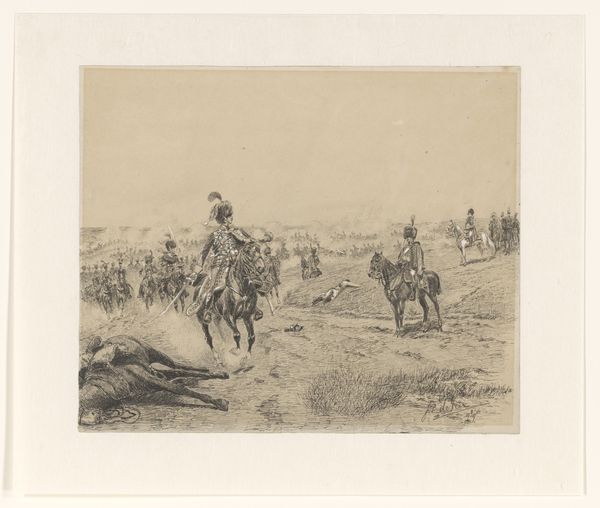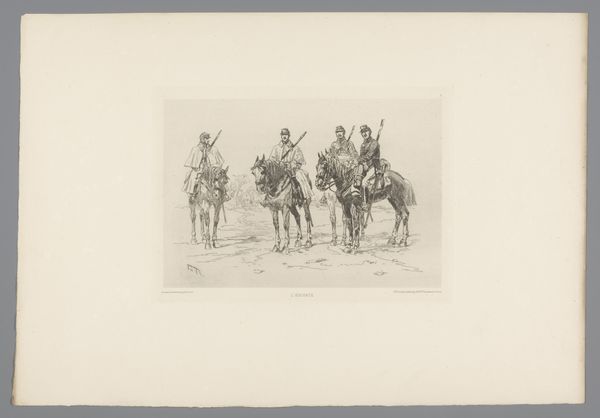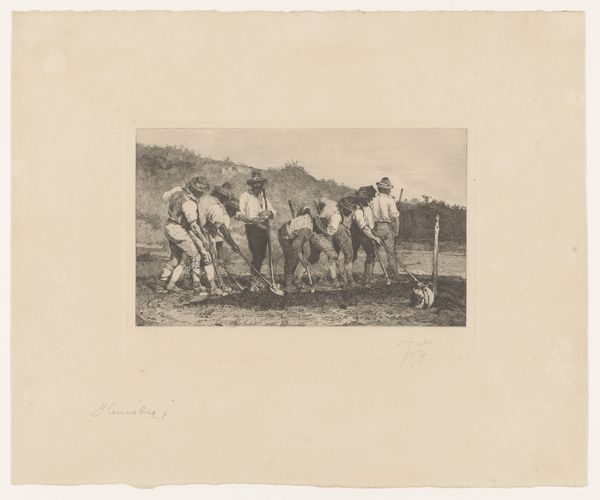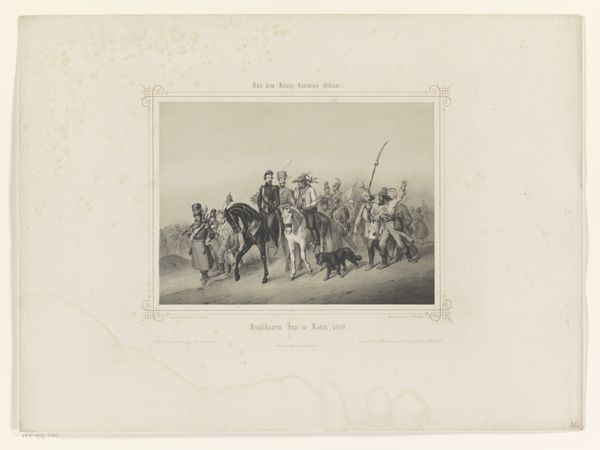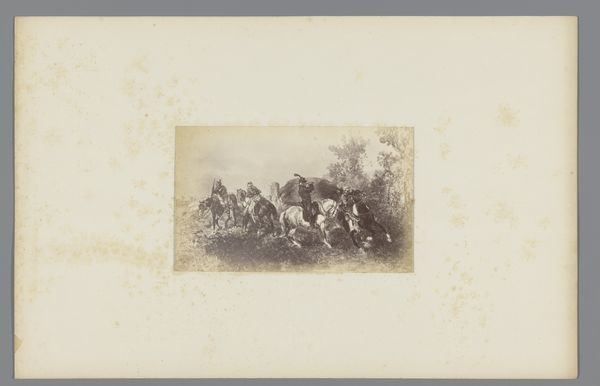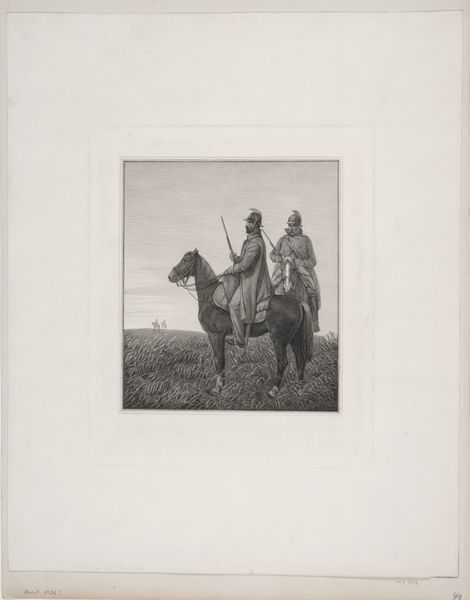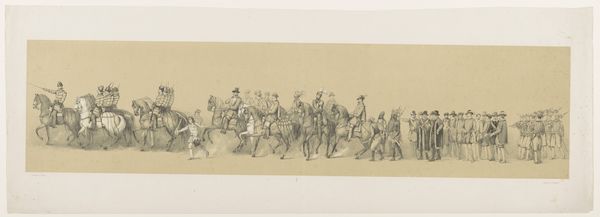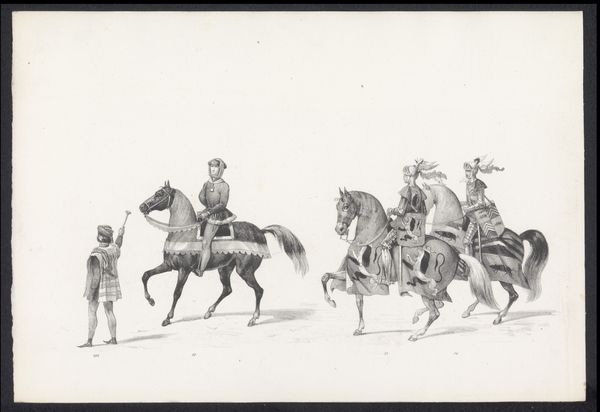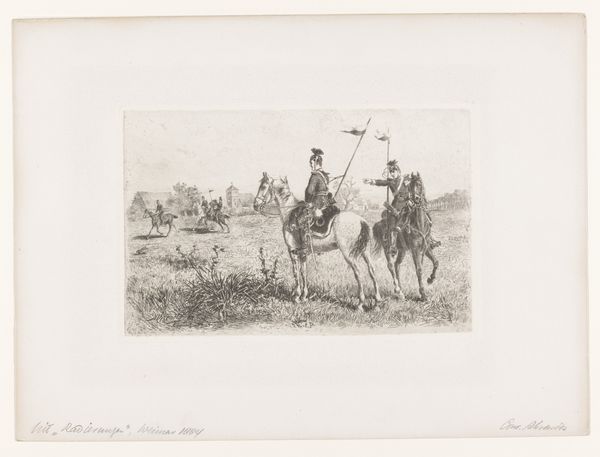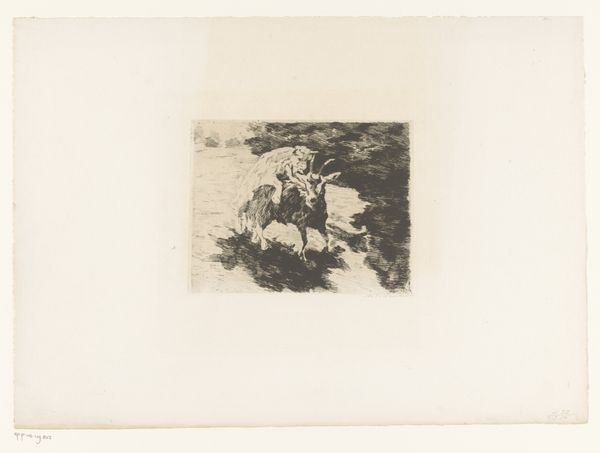
drawing, lithograph, print, paper
#
drawing
#
lithograph
# print
#
impressionism
#
landscape
#
paper
#
genre-painting
Dimensions: 210 × 243 mm (image); 389 × 569 mm (sheet)
Copyright: Public Domain
Curator: This is Georges-William Thornley's lithograph titled "The Jockeys," created between 1889 and 1890. It currently resides here at The Art Institute of Chicago. Editor: My initial reaction is one of movement and immediacy. The monochromatic palette really emphasizes the textures of the paper and ink, but also this dynamic scene unfolding before us. Curator: Indeed. Notice how Thornley employs a landscape perspective but integrates elements of genre-painting through his chosen subject: the active scene of jockeys, presumably mid-race or practice. The visual planes create depth. Editor: The materiality really interests me here. What kind of paper was typical for lithographs like this at the time, and how might its texture have influenced Thornley's mark-making? This almost sepia-toned print evokes photographic techniques – I imagine the jockeys and horses as workers and machines fused in pursuit. Curator: From a formalist perspective, that subdued color harmonizes effectively with the linear strokes that delineate the jockeys and their mounts. This unity suggests a cohesion, possibly a nod to Impressionism's pursuit of capturing a fleeting moment. The repetition of the riders adds rhythm. Editor: Repetition and rhythm established through industrial printmaking practices, no less! I’m fascinated by how such readily reproducible techniques became so integral to fine art printing at that time. This democratization allowed for widespread consumption, did it not? Curator: It expanded accessibility, certainly, allowing artists to disseminate their vision, influencing societal perspectives on art, representation, and the spectacle of racing itself. Consider how this composition and treatment alter or affirm the traditions of equestrian portraiture. Editor: Reflecting on the materials—the paper, ink, the lithographic stone itself—brings us closer to grasping the conditions of production of late 19th-century art. "The Jockeys" bridges worlds: high art and industrial reproduction, human and machine. It's an object that spurs one to delve into layers of processes to better appreciate the final result. Curator: Indeed, it's in studying the form that we can glean a sense of both its historic grounding and its artistic merit, allowing us a deeper understanding of Impressionism.
Comments
No comments
Be the first to comment and join the conversation on the ultimate creative platform.
